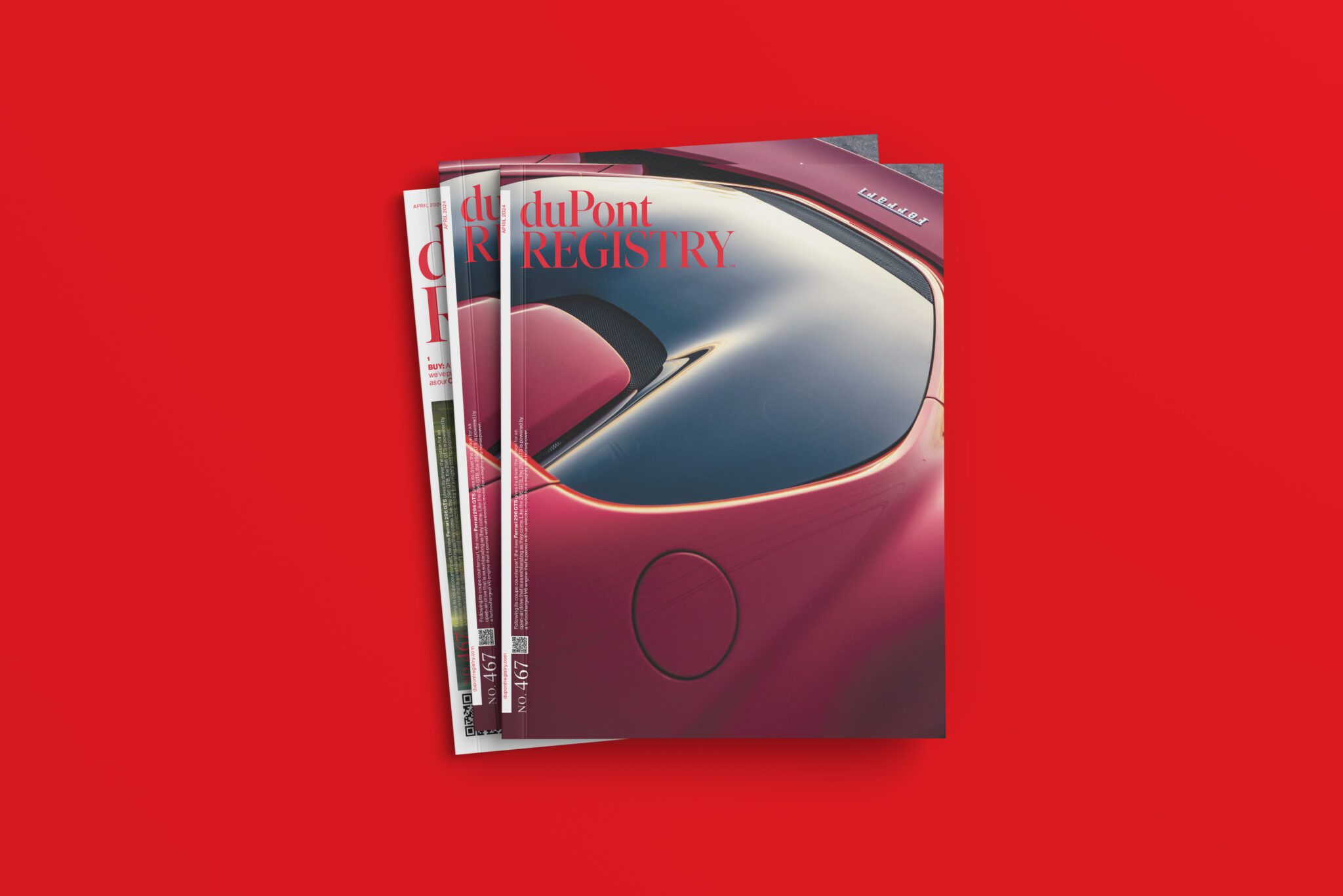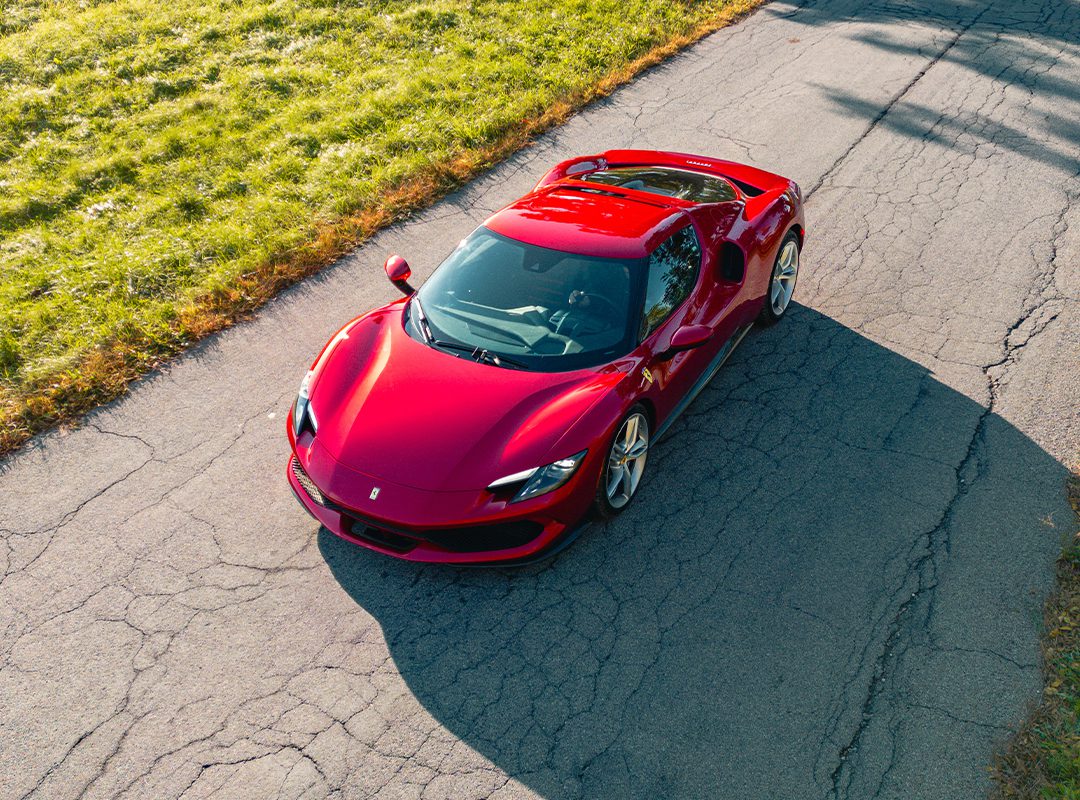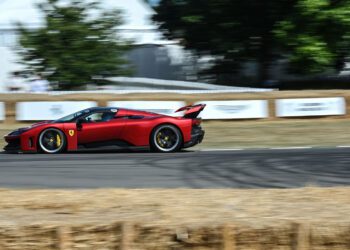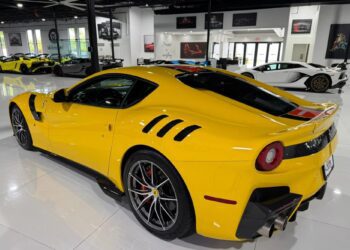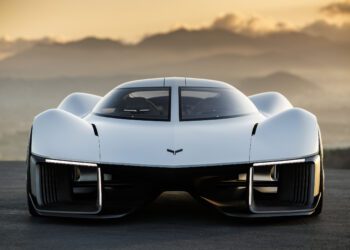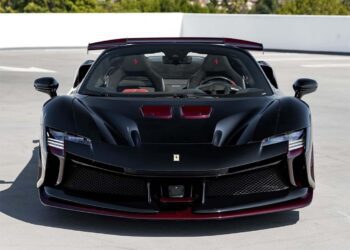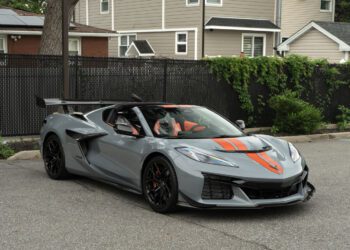When deciding our Car of the Year, we had to pick something that checked off all of the boxes. From its exterior and interior design to how it drives, and everything in between, the 296 most definitely fits the bill.
For me, watching the V8 disappear from sports cars is like watching a beautiful coastline slowly erode. With each passing storm, less of the land remains to remind you why you loved it in the first place. The Ferrari’s flat-plane crank F136 V8 — a howling marvel that lived inside some of Ferrari’s best creations (especially the 458 Speciale) — is my first and perhaps last love. It captivated me and held me in its thrall. This is a very personal choice; there are V12 fanatics out there who would fight me to the death. But I will always adore the ripping of air achieved by Ferrari’s V8, which Maranello first introduced in 1975, in the iconic 308 GTB.
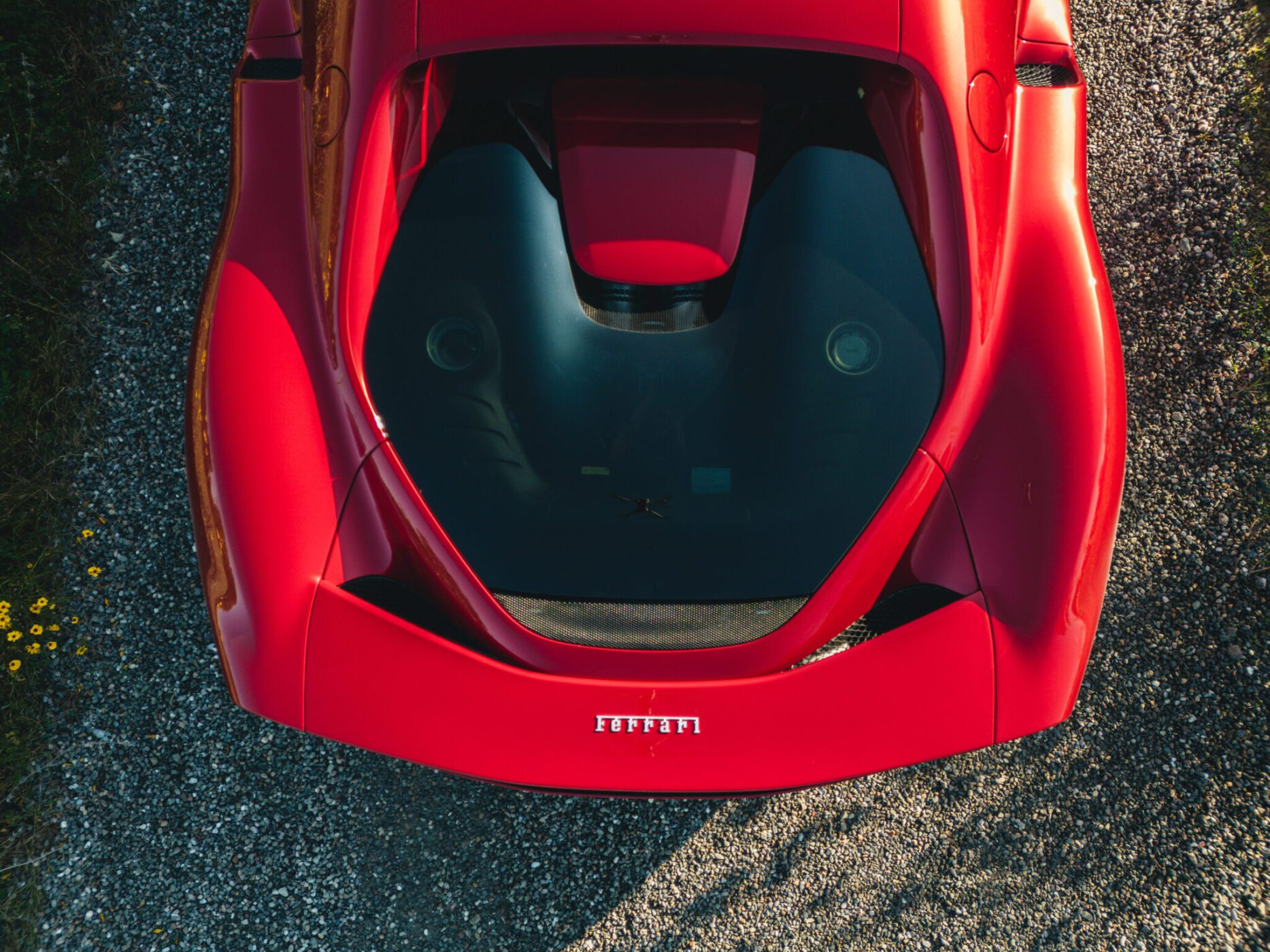
The changing tides have brought the end, for now at least, of the V8. Now we must contend with a very clever sleight of hand that threatens to erase our childhood memories: The Ferrari 296 GTB — and its newest variant, the open-top GTS — is a plug-in-hybrid V6, and it is wonderful. One of the most beautiful Ferraris ever made, it has almost single-handedly redefined the powertrain of the midengine supercar in the modern age.
For that reason, and many more, the Ferrari 296 has earned duPont REGISTRY’s first-ever Car of the Year award.
Of course, it comes with a mighty hefty price tag of $500,300 — a significant markup from the $371,139 base price and a quantum leap above its direct successor, the V8-powered F8 Spider.
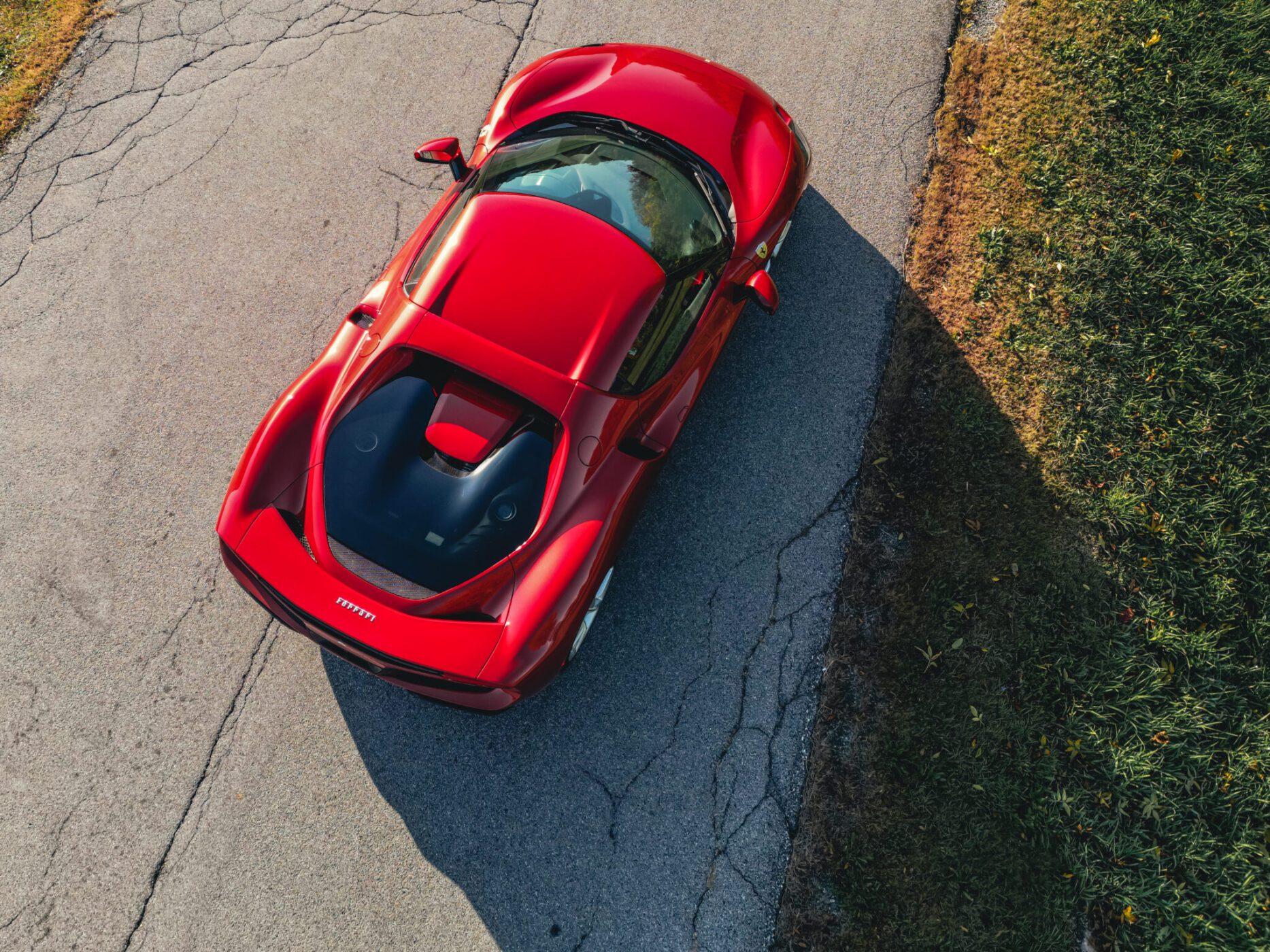
I loved the Ferrari 296 from the moment I first drove it two years ago in Italy. Why? It’s objective sexiness doesn’t hurt. As a coupe or convertible, the design has no expiration date. It fits seamlessly into Ferrari’s hallowed continuum. Ferrari’s designers claim its objective was to create authentic Italian forms, a silhouette drawn with a single pencil stroke.
The cockpit hunkers low, encapsulated by lithe fender flares. It is compact in form and expresses a darting speed even at a standstill. There are no extraneous notes, no interruptions in the design. Where the Corvette C8 Z06 looks like it was drawn by a bored teenager during geometry class, and McLaren nearly gets it with the similarly powered Artura, the Ferrari is the adult prodigy in the room.
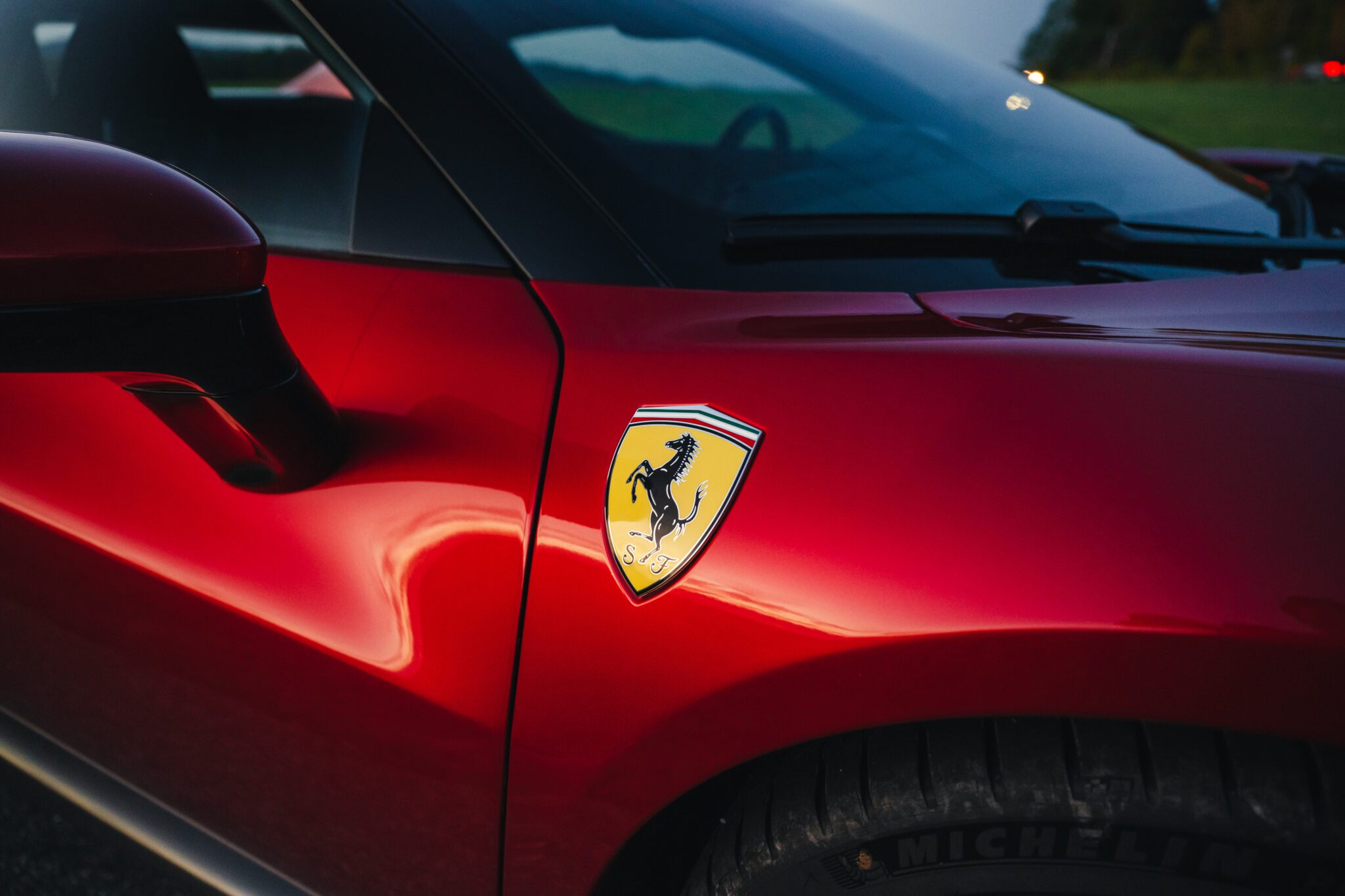
The 296 emerged from the design shop of mad genius Flavio Manzoni. When he removed the roof, he created a hinge in the hardtop above the B-pillar. When you open the top, the roof folds flush over the engine, concealing the power plant while allowing proper dissipation of the V6’s heat. It’s an ingenious detail that compromises almost nothing.
Ferrari’s design philosophy has always been about blending form and function in a way that mesmerizes all parties. The GTS is a stunning embodiment of this ethos. Its exterior is a masterpiece of elegant aerodynamics, with every curve and angle meticulously crafted to reduce drag and enhance downforce. The aggressive grille feeds air into the engine bay and cooling systems, while the sculpted sides and rear manipulate the airflow. The hardtop retracts in a mere 14 seconds.
Inside, the cockpit is a leather, carbon-fiber, and aluminum master class in driver-focused design: the manettino on the wheel is exactly where it should be, and the other controls are arrayed with simplicity and thought. This is a luxury: beautiful and not too busy.
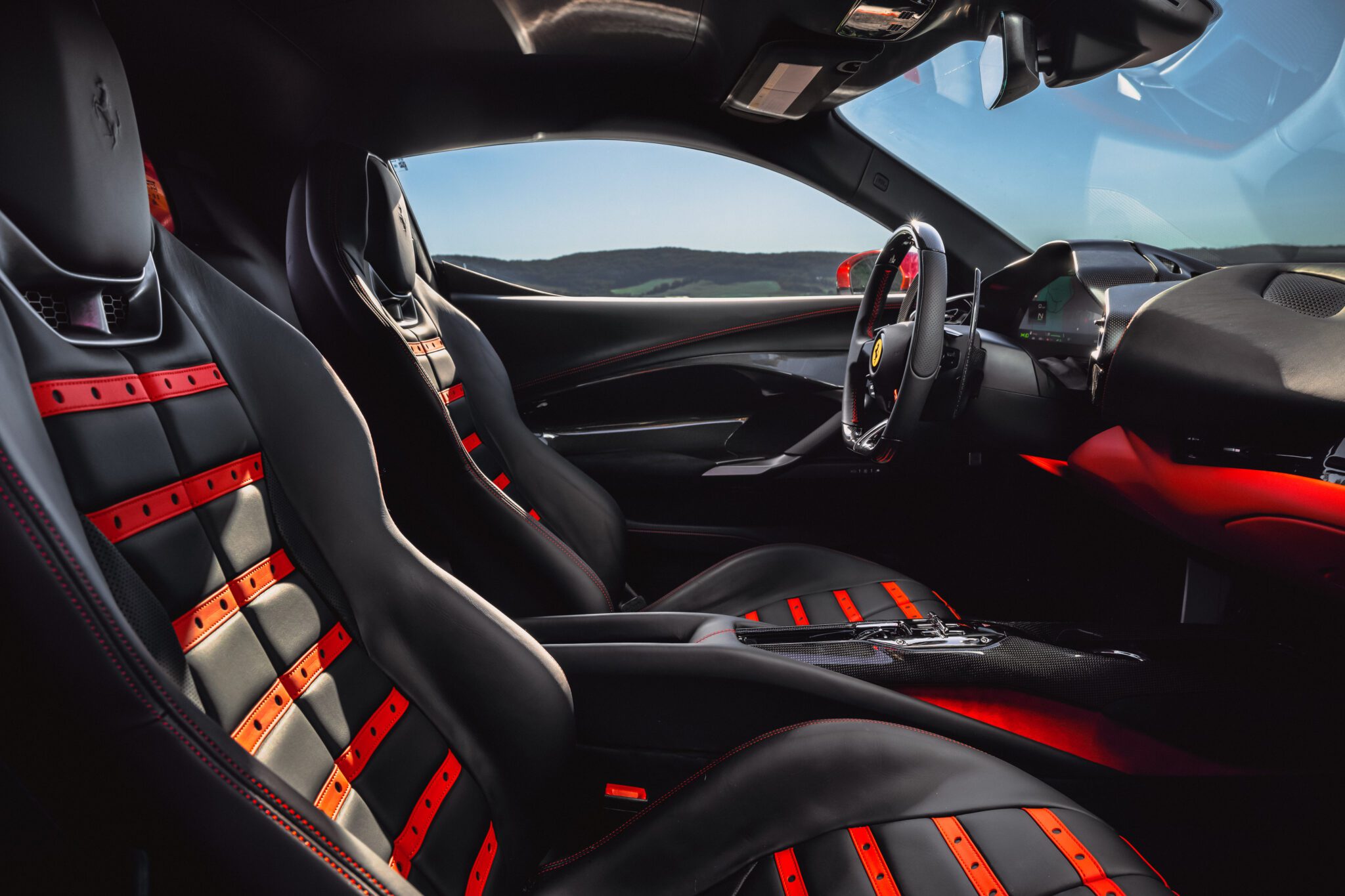
On the road, the electric motor — in something like irony — is the secret sauce of the 296. Whipping open the throttle during a drive outside Maranello, the torque of the electric motor transforms the V6 from a welterweight into an 819-horsepower killer. It’s hard not to love it. The GTB hits the 0 to 60 mph mark in only 2.4 seconds, and a quarter-mile in 9.7 seconds. Yes. You read that right. There is the speed, but there’s also the steering response, the extraordinary braking, and an engine sound that doesn’t feel like it’s trying too hard to impress.
When the gas-powered engine kicks in, it’s like a series of thunderclaps, like listening to Bonham burst into Page’s guitar solo in “Over the Hills and Far Away.” It’s a clever concoction that maximizes the smaller configuration of the V6. Two 180,000-rpm turbos cram air into the firing chamber, and the pistons fire in the same order as Ferrari’s naturally aspirated V12.
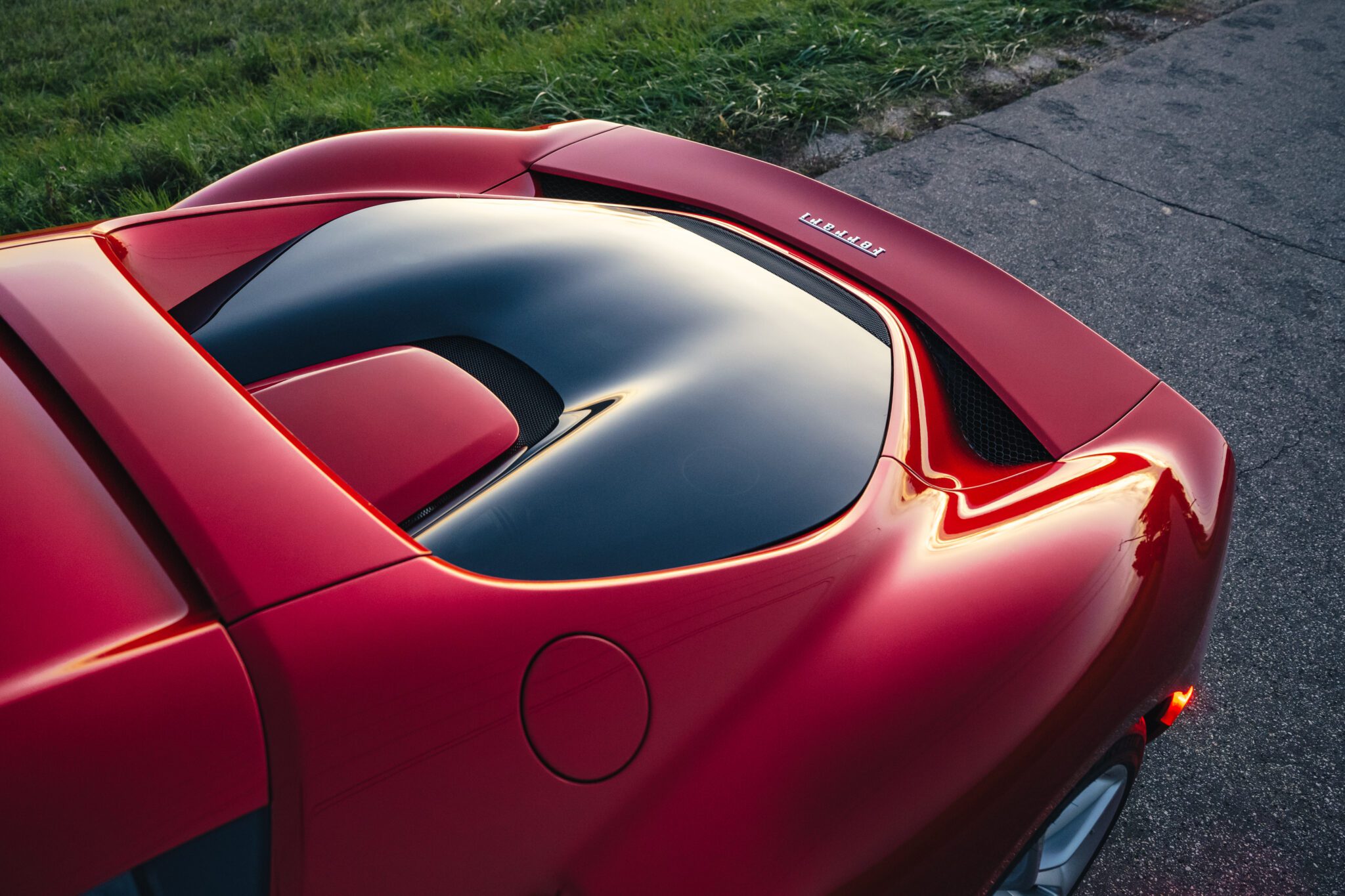
The convertible’s design cleverly maintains the coupe’s aerodynamic efficiency. No downforce is lost when the roof is down, allowing for speeds of up to 205 mph regardless of the roof’s position. The design retains the iconic flying buttresses, now with added functionality for the fuel and charging ports. The active rear spoiler, a modern take on Ferrari’s aerodynamic solutions, enhances downforce without increasing drag. The convertible’s introduction adds 154 pounds to the curb weight, yet Ferrari has managed to make the GTS 50 percent more rigid than the F8 Spider.
Whether or not EVs take over the car market, whether or not the rising tide of change obliterates the cars that we love, what the Ferrari 296 has accomplished is timeless, and if it is indeed the future of the supercar, then I embrace it.
This article appeared in our April 2024 Issue.

